MARKET OVERVIEW
The global compounding pharmacies market is a specialty within the broader pharmaceutical company, itself compounding around the needs of individual patients. Rather than mass-producing generic medications, this industry specializes in formulated drug compounding. These special pharmacies will stick to their mission of treating patients that cannot be adequately treated by off-the-shelf medications due to allergies, dosage requirements, or recall medications. Unlike traditional drug store chains, compounding pharmacies tailor drugs from scratch, blending raw materials to produce a drug to meet the individual needs of a given patient. This characteristic will allow the market to maintain a unique character within the overall pharma industry.
The global compounding pharmacies market will serve multicultural patient populations from pediatrics and geriatrics to chronic disease patients who need nonstandard forms of drug delivery or ingredients. As global regulatory systems slowly conform to accommodate personalized medicine, compounding pharmacies will be poised at the edge of mainstream pharmacology and patient-tailored therapy. Physicians will have more and more dependence on them when stock formulations are insufficient to meet clinical demands. Such a dynamic will in turn affect the development of specialized services and supply chains not present in traditional drug manufacturing.
One of the unique characteristics of this market will be its dependence on professional personnel and advanced technology. Compared to conventional pharmaceutical industries with a high level of automation and batch processing, compounding employs hand precision and often one-to-one interaction between prescribers and pharmacists. This adds layers of sophistication and responsibility that are otherwise missing in commercial drug manufacturing. But this is what will ensure the global compounding pharmacies market remains relevant in covering gaps left by mainstream medicine.
Even operating on relatively smaller scale, these pharmacies will be strategically engaged in the treatment of rare disease and allergic conditions, in which generic medications fall short. They will also continue to deal with patients with unique flavor, texture, or form requirements, such as liquid suspensions instead of tablets, that are not fulfilled by mass market pharmaceutical companies. These customized offerings, although not necessarily of high volume, will be a value-based healthcare system—one that puts patient needs first.
In the future, the global compounding pharmacies market will not be merely an alternative when the regular medicines don't fit. Instead, it will be an active healthcare partner, offering bespoke medical solutions in a world that demands customization. The sector will spread its wings with formulation science innovation by leveraging advancements in chemistry, biotech, and digital health technologies to stay in business.
As time progresses, it will have to contend with ethical, legal, and quality control challenges, most notably in those markets where regulatory certainty is lacking. However, it will be ensured survival by its ability to treat individual medical needs on a degree of flexibility that no traditional pharmaceutical companies can match. The global compounding pharmacies market will continue to be defined, not by volume but by value, and the contributions it makes will be defining the future of patient-centered care in years to come.
Global compounding pharmacies market is estimated to reach $22,308.88 Million by 2032; growing at a CAGR of 6.0% from 2025 to 2032.
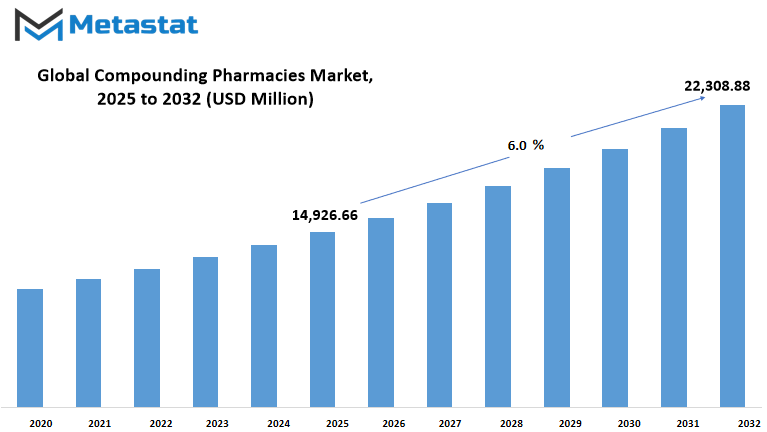
GROWTH FACTORS
The global compounding pharmacies market is expected to grow steadily over the coming years due to rising demand for consumer electronics, industrial automation, and smart devices. As technology continues to advance, there will be an increased need to ensure the performance and reliability of electronic components. This makes testing and repair services essential, especially in a region like Southeast Asia where manufacturing activity is expanding rapidly. With countries such as Vietnam, Malaysia, and Thailand investing in tech infrastructure, the market will likely benefit from government support, foreign investment, and the presence of major semiconductor companies looking to establish regional hubs.
On a broader scale, the global compounding pharmacies market is also set to play an important role in the healthcare industry of the future. Personalized medicine is becoming more common, and compounding pharmacies allow for customized medications tailored to individual patient needs. This includes dosage adjustments, allergy-friendly formulations, and combinations of drugs not typically available in commercial form. An aging population and rising rates of chronic conditions are key driving factors of the market. However, limited regulatory frameworks and concerns around quality control might hamper market growth. Stricter oversight and clearer guidelines would help build trust and support wider adoption of these services. The integration of digital tools and automation in compounding practices would provide lucrative opportunities for the market in coming years, allowing pharmacies to improve both efficiency and accuracy.
Returning to the Compounding Pharmacies Market, another important factor is the push for energy efficiency and miniaturization in devices. These trends require even more precise and thorough testing, which will create greater demand for advanced services. As electronic products become more complex, testing and repair providers will need to adapt quickly, offering updated techniques and tools to meet industry standards. Additionally, the shortage of skilled technicians could be a challenge. Training programs and education partnerships will be important in ensuring that the workforce is prepared for the technical demands of the job.
Looking ahead, this market will be shaped not only by demand from end-users but also by the ability of service providers to innovate and stay flexible. As long as technology keeps moving forward and electronic systems play a bigger part in everyday life, the need for reliable test and repair services in Southeast Asia will only grow stronger, setting the stage for a dynamic and essential industry.
MARKET SEGMENTATION
By Therapeutic Area
The global compounding pharmacies market is expected to grow steadily as digital technology continues to shape industries across the region. As more devices are made smarter and faster, the need to test and fix tiny, complex parts becomes even more important. With advancements in smartphones, electric vehicles, smart home systems, and industrial equipment, this market will see more demand for accurate and efficient testing and repair solutions. Manufacturers are beginning to focus more on maintaining product quality, reducing waste, and shortening development time, which all require reliable testing services.
One of the main reasons behind the growth of this market is the increasing pressure to meet higher performance standards in electronics. As chip sizes shrink and their functions grow, even small flaws can create major problems. That’s where testing and repair come in. These services help prevent costly failures and keep devices running as expected. Companies across Southeast Asia will invest more in advanced tools and skilled workers who can ensure their products meet customer needs and pass quality checks. This will not only support stronger local production but will also allow businesses in the region to compete better in the global market.
In comparison, the global compounding pharmacies market is also expected to see steady growth. By therapeutic area, it is further segmented into hormone replacement therapy, pain management, specialty drugs, dermatology, nutritional supplements, and others. Each of these segments reflects a growing demand for personalized treatments. In the future, people will want medicines tailored to their exact needs, and compounding pharmacies will help make that possible. For example, as awareness grows around hormone health and chronic pain, more patients may turn to customized therapies instead of mass-produced drugs. Nutritional supplements will also play a larger role in daily health management as more people focus on prevention rather than just treatment. This shift will encourage the development of new services and technologies that allow pharmacies to create safer, more effective medications.
By Compounding Type
The global compounding pharmacies market is expected to grow steadily due to the increasing need for customized medications that meet individual patient needs. One of the main reasons for this growth is how people are responding to treatments. Many individuals react differently to standard medication dosages or ingredients. Compounding pharmacies allow doctors to work with pharmacists to make changes in the medicine’s formula, so patients can receive the most effective treatment possible.
By Compounding Type, the market is mainly divided into four areas: Pharmaceutical Ingredient Alteration (PIA), Currently Unavailable Pharmaceutical Manufacturing (CUPM), Pharmaceutical Dosage Alteration (PDA), and others. PIA refers to changing one or more ingredients in a medication. This helps people who may have allergies or reactions to certain components. CUPM addresses shortages or complete lack of availability of certain drugs. Instead of waiting for a manufacturer to resume production, pharmacists can create the medication when patients need it most. PDA focuses on adjusting the amount or form of medication. Some patients may need a smaller dose or require the drug in a liquid instead of a tablet. The “others” category includes less common but still important practices that help further personalize healthcare.
Looking ahead, the rise in chronic diseases and aging populations will push this market forward. As more patients need specific treatments not available through standard medications, these customized solutions will play a bigger role. Technology will support this shift, making it easier for pharmacists to develop and track personalized medicine safely. Additionally, the growing demand for transparency and safe healthcare will encourage stricter rules and better practices, making compounded drugs even more reliable.
Now, turning attention to the global compounding pharmacies market, this area is likely to become more vital in the coming years. The region is already showing signs of being a strong player in electronics manufacturing, and with that growth comes the need for more advanced testing and repair services. These services make sure devices meet safety and performance standards before reaching consumers. As devices become smaller and more complex, identifying and fixing errors quickly will be important. This market will help maintain quality and reduce electronic waste by allowing repairs instead of full replacements. It supports not only sustainability but also cost-effectiveness for businesses that rely on high-tech equipment.
By Route of Administration
The global compounding pharmacies market is expected to see steady growth as technology continues to move forward. This market will benefit from trends such as miniaturization and integration of more functions into single chips. As chips become smaller and more complex, traditional testing methods may no longer be enough. There will be a growing need for more precise and intelligent testing solutions, and Southeast Asia is likely to attract investment in advanced facilities and training. As global supply chains evolve, this region might also play a stronger role in the full cycle of semiconductor development, not just in manufacturing but also in testing and repair.
Switching to another area, the global compounding pharmacies market is also expected to see a shift in how medicines are delivered. When broken down by route of administration, we can expect the oral segment to continue leading due to convenience and familiarity. However, topical and parenteral routes may see more attention in the future. For instance, topical applications could become more popular in treating localized pain or skin conditions without affecting the whole body. Parenteral options, such as injections, might grow with the rise in personalized treatments and biologics, where quick absorption is needed.
Other routes, though currently less common, could rise with new drug delivery technologies. As people look for easier or more effective ways to receive medication, pharmacies might start offering solutions that are tailored not just to the patient's condition, but also to their lifestyle. The growth in personalized care will likely push compounding pharmacies to adapt quickly, ensuring that they stay relevant and ready for the future of healthcare.
By Distribution Channel
The global compounding pharmacies market, when looked at through the lens of distribution channels, is split into three main types: compounding pharmacies, hospital pharmacies, and others. Each of these plays a key role in how customized medication reaches patients. Over time, the need for specialized treatments has grown, and this has led to a steady increase in demand for compounding services. These services allow pharmacists to create medications tailored to individual needs when commercial drugs don't meet specific health requirements. As we look ahead, the future of this market is likely to be shaped by technology, regulatory shifts, and patient-centered care.
Compounding pharmacies are at the core of this market. They are designed to serve people who need medications in unique forms, such as sugar-free, dye-free, or liquid versions for those who can't take pills. Because of these personalized touches, compounding pharmacies will continue to hold strong value. Hospital pharmacies also play a big part, especially when patients need immediate access to customized treatments, such as during surgery or intensive care. The "others" category includes smaller facilities or clinics that offer compounding services as part of broader health care offerings. Though smaller in scale, these channels add to the overall access patients have to tailored medications.
The future growth of the global compounding pharmacies market will likely come from more advanced technologies and automation. Robotic systems and AI tools may be used to help reduce errors and speed up preparation times. These tools can make the process safer and more reliable. Regulations will also become stricter, which could push the industry to raise its standards and improve quality controls. At the same time, more healthcare professionals are expected to recognize the value of personalized treatment. This shift in thinking will help boost the trust in, and demand for, compounded medications.
In the years to come, aging populations, rising chronic conditions, and greater awareness of tailored care will all support market growth. The ability to meet individual needs in a precise way gives this market an advantage over mass-produced drugs. As people continue to seek treatments that fit their specific health conditions, the demand for these services will keep growing. Whether it’s for rare diseases or simple medication adjustments, the need for customization is only going to increase. Because of this, the global compounding pharmacies market has a strong outlook for the future, especially across different distribution channels.
|
Forecast Period |
2025-2032 |
|
Market Size in 2025 |
$14,926.66 million |
|
Market Size by 2032 |
$22,308.88 Million |
|
Growth Rate from 2025 to 2032 |
6.0% |
|
Base Year |
2024 |
|
Regions Covered |
North America, Europe, Asia-Pacific Green, South America, Middle East & Africa |
REGIONAL ANALYSIS
The global compounding pharmacies market is expected to see significant growth in the coming years, driven by increasing demand for personalized medicine and growing awareness of tailored treatment options. As more patients seek alternatives to mass-produced medications, pharmacies that can create custom doses, forms, and combinations of drugs will become essential in modern healthcare. This shift will not just be limited to developed nations but will slowly expand into emerging regions as well, offering people access to medications that better suit their personal health needs.
From a geographical perspective, North America leads the market, especially due to the presence of strong healthcare infrastructure and rising demand for customized therapies. The U.S. stands at the forefront, followed closely by Canada and Mexico, where regulations are becoming more favorable for compounding practices. Europe is also seeing a steady rise, with countries like the UK, Germany, France, and Italy investing more into pharmacy advancements. The Asia-Pacific region, including India, China, Japan, and South Korea, shows promising potential as these countries invest more in healthcare and personalized solutions, making compounding a growing part of their pharmaceutical services. South America, with Brazil and Argentina at the lead, is also slowly embracing the concept. In the Middle East & Africa, countries such as those in the GCC, Egypt, and South Africa are beginning to see compounding as a solution to supply gaps and unmet patient needs.
At the same time, the global compounding pharmacies market will continue to grow alongside this shift. As medical technologies advance, especially in areas like patient-monitoring devices and pharmaceutical production tools, the need for reliable electronics testing and repair will rise.
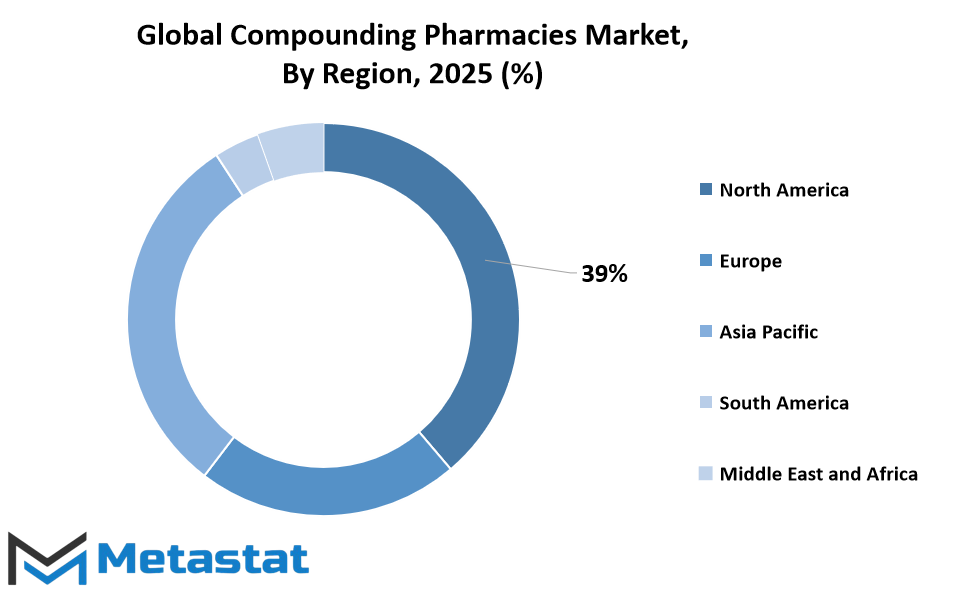
COMPETITIVE PLAYERS
The global compounding pharmacies market is expected to grow steadily in the coming years, influenced by the rising demand for personalized medicine and patient-specific formulations. As more individuals seek alternatives to mass-produced drugs, pharmacies that specialize in custom medication preparation will become even more important. Patients are looking for treatments that meet their exact medical needs, whether it's avoiding an allergy-causing ingredient or adjusting a dosage to suit their condition more precisely. This shift toward individualized care is helping the compounding industry become a central part of modern healthcare. Advances in technology and increasing awareness about the benefits of tailored medicine will likely continue to drive demand.
Some of the key players shaping this market include Fagron, Walgreen Co., Wedgewood Pharmacy, Fresh Therapeutics Compounding Pharmacy, The London Specialist Pharmacy Ltd (Specialist Pharmacy), and Roseway Labs. These companies are focusing on improving quality standards and expanding their product range to meet diverse patient needs. Others like Aurora Compounding, Formul8, and Fusion Apothecary are gaining attention for their innovative approaches and efficient service. In the future, these businesses are likely to invest more in automation, improve quality control systems, and enhance staff training, which will help ensure safety and consistency in their offerings. Pharmacies such as Dougherty’s Pharmacy Inc., ITC Compounding Pharmacy, Pencol Compounding Pharmacy, Rx3 Compounding Pharmacy, and Valor Compounding Pharmacy Inc. are also contributing to growth by serving specialized patient groups and forming partnerships with healthcare providers.
Looking ahead, the global compounding pharmacies market will likely be shaped by stricter regulatory standards and a stronger push toward transparency. This means that companies will need to be more careful about sourcing ingredients and maintaining quality records. At the same time, the use of digital platforms will become more common, making it easier for patients and doctors to request and track customized medications.
While this growth continues worldwide, the Compounding Pharmacies Market will also show noticeable development. This market will benefit from the rise in smart devices, electric vehicles, and high-performance computing. As electronics become more advanced, the need for precise testing and efficient repair services will become more critical. In the future, both automation and skilled human intervention will work together to support the increasing complexity of electronic components. The focus will remain on providing timely and reliable solutions to ensure device performance remains high throughout their life cycle.
Compounding Pharmacies Market Key Segments:
By Therapeutic Area
- Hormone Replacement Therapy
- Pain Management
- Specialty Drugs
- Dermatology
- Nutritional Supplements
- Others
By Compounding Type
- Pharmaceutical Ingredient Alteration (PIA)
- Currently Unavailable Pharmaceutical Manufacturing (CUPM)
- Pharmaceutical Dosage Alteration (PDA)
- Others
By Route of Administration
- Oral
- Topical
- Parenteral
- Others
By Distribution Channel
- Compounding Pharmacy
- Hospital Pharmacy
- Others
Key Global Compounding Pharmacies Industry Players
- Fagron
- Walgreen Co.
- Wedgewood Pharmacy
- Fresh Therapeutics Compounding Pharmacy
- The London Specialist Pharmacy Ltd (Specialist Pharmacy)
- Roseway Labs
- Aurora Compounding
- Formul8
- Fusion Apothecary
- Dougherty’s Pharmacy Inc.
- ITC Compounding Pharmacy
- Pencol Compounding Pharmacy
- Rx3 Compounding Pharmacy
- Valor Compounding Pharmacy Inc.
WHAT REPORT PROVIDES
- Full in-depth analysis of the parent Industry
- Important changes in market and its dynamics
- Segmentation details of the market
- Former, on-going, and projected market analysis in terms of volume and value
- Assessment of niche industry developments
- Market share analysis
- Key strategies of major players
- Emerging segments and regional growth potential



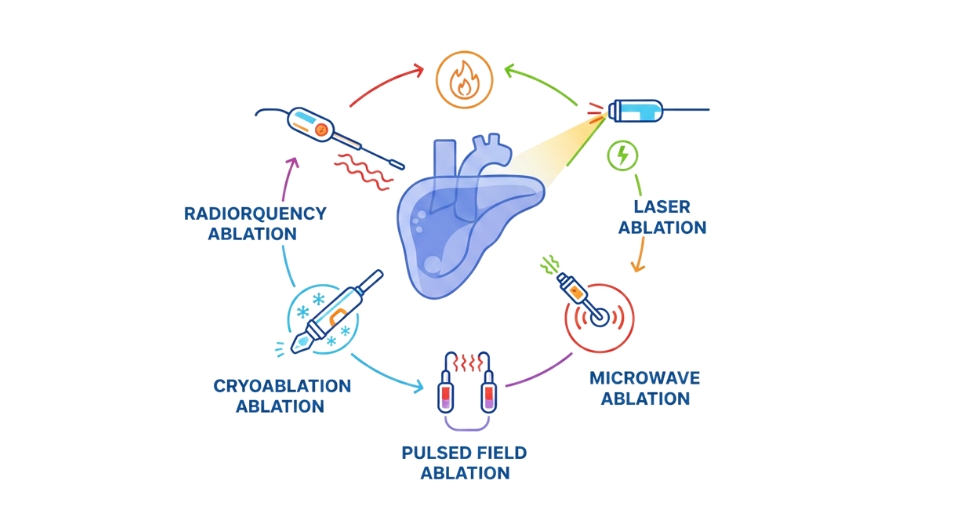

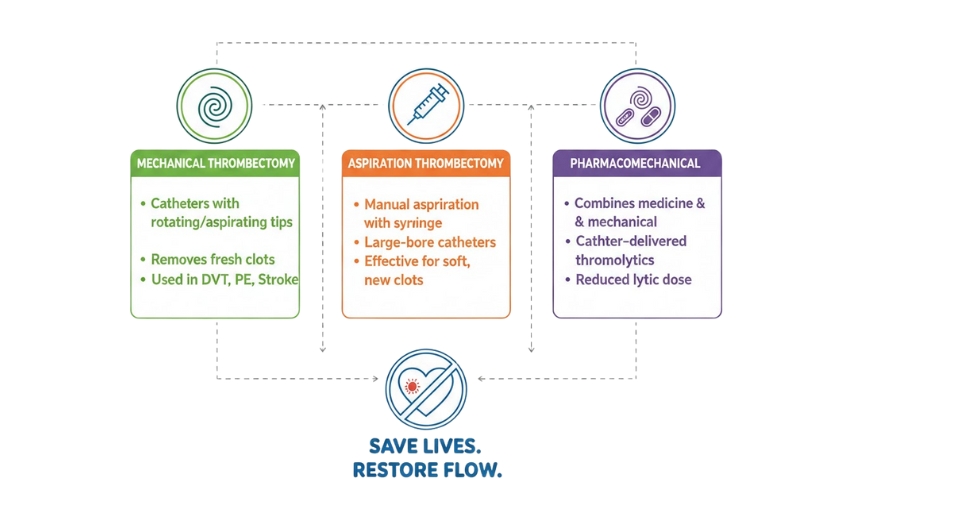
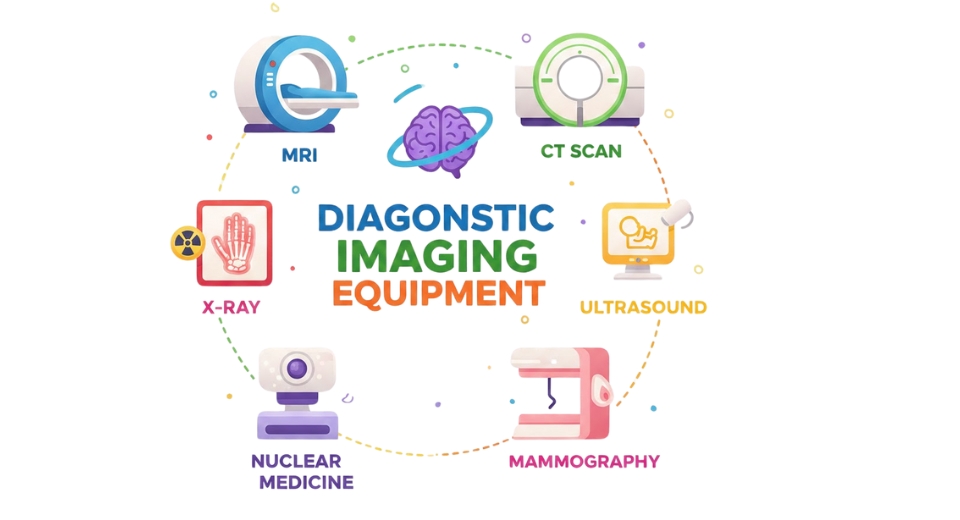

 US: +1 3023308252
US: +1 3023308252






